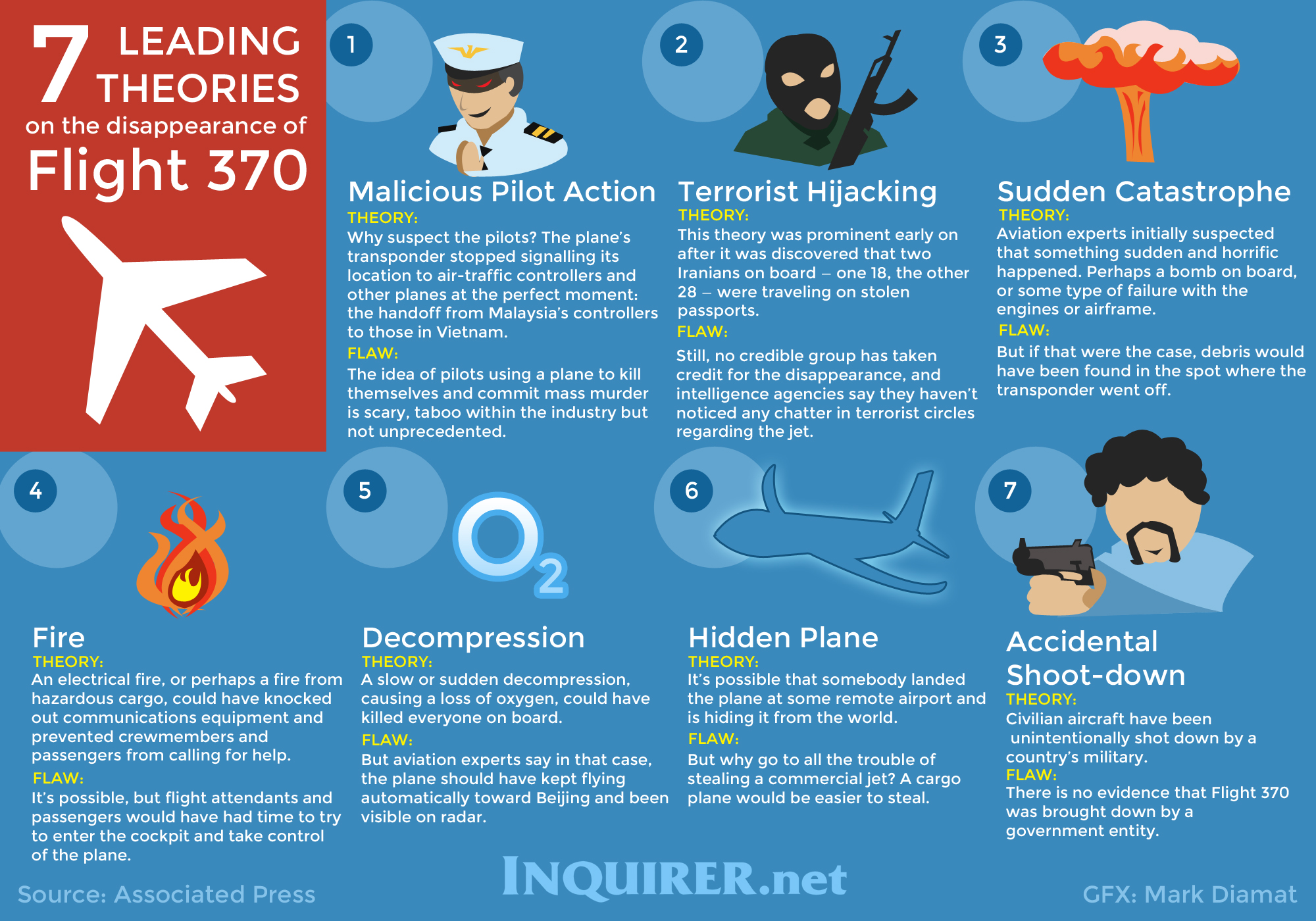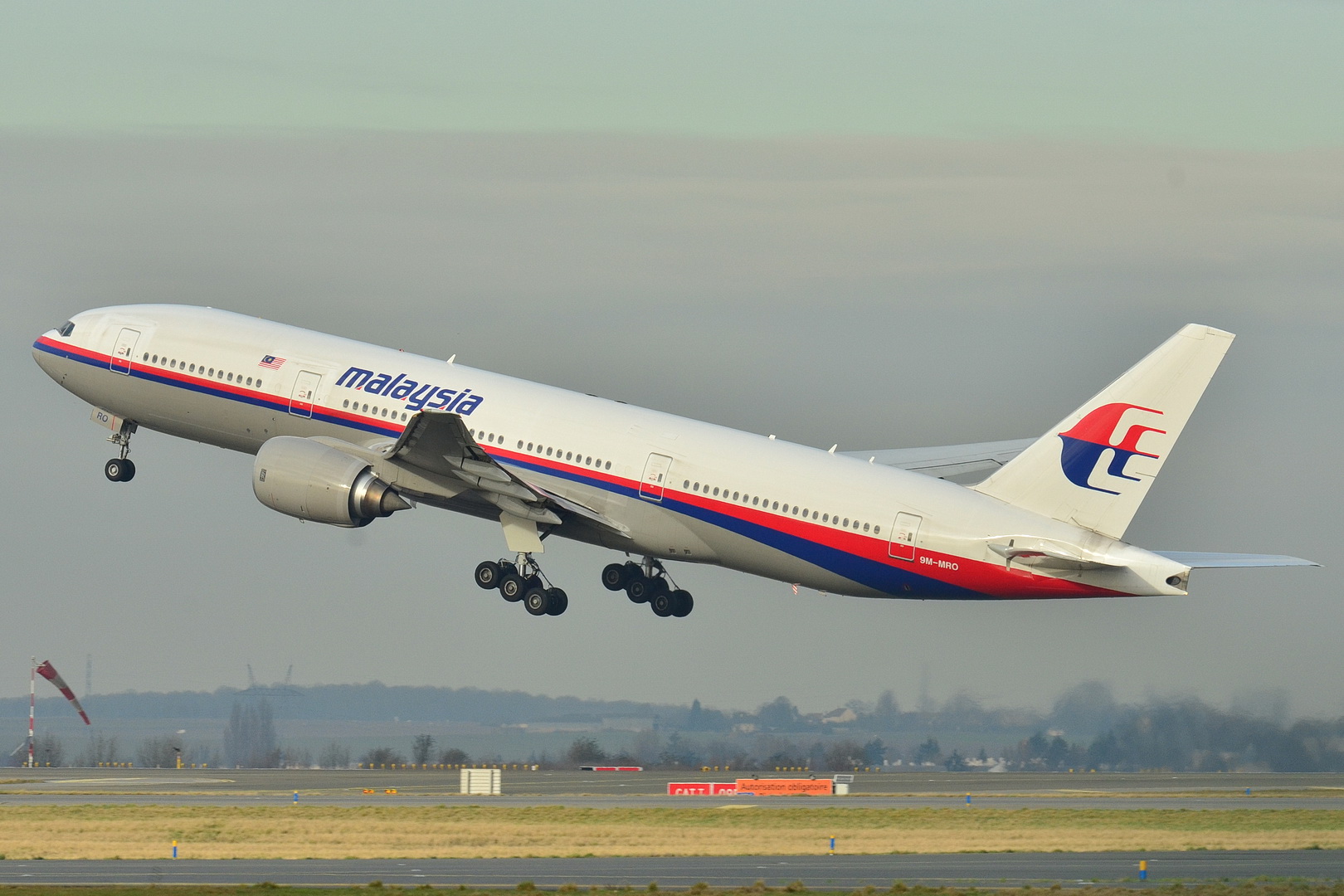

The Fascination Surrounding The Disappearance of The Malaysia Airlines Plane
Where is that missing plane?
That is the million dollar question. It has been two weeks since Malaysian Flight 370 disappeared, and now there are signs that they may have found pieces of it off the Australian coast. How in this day and age with all the technology- satellites, cameras, radar, cellphones- can something as big as a 777 airplane just go missing for 13 days?
It simply defies logic.
The story understandably has gripped the world. I've been reporting on it on CNN since it first went missing. People stop me on the street asking about that plane. Whenever I’m on the air reporting the story, my twitter feed trends worldwide; meaning it’s one of the top things people are tweeting about in the world. I’ve never seen anything like it. When I ask psychologists about it they say it’s because, number one, it’s a mystery. Even in our sleeping hours our brains are constantly trying to solve problems and are not satisfied until it does. This problem has not been solved.
And number two, it’s relatable.
Most of us fly, if not frequently for business, we do it a few times a year for holidays or vacations. So, we put ourselves in the shoes of the passengers. My colleague Sally Kohn wrote this on CNN.com: “Stories about death inherently hold our attention. The more dark among us — and HBO producers — might attribute this to a lust for the gruesome. Freud would simply call it our “death drive” — that mix of fear and fascination that our lives must ultimately end.”
I agree with her. It’s more often than not the dark shows like The Walking Dead –zombies- or True Blood- vampires- or Dexter-serial killers-that garner the biggest ratings and cult followings. And let’s not forget The X Files, The Twilight Zone and so on. That’s all well and good. Not to bring you down, we must remember that there are at least 239 families who are grieving. There are mothers who are in anguish. One of them stepped in front of cameras earlier this week and cried and pleaded with the Malaysian government to tell her what happened to her son. We must hold that top of mind when we’re trying to figure out this conundrum.
One man’s mystery is another man or woman’s misery.
Malaysia Airlines Flight 370
From Wikipedia, the free encyclopedia

Malaysia Airlines Flight 370 (MH370/MAS370)[a] was a scheduled international passenger flight that disappeared on 8 March 2014 en route from Kuala Lumpur International Airport to Beijing Capital International Airport. The aircraft, a Boeing 777-200ER, last made contact with air traffic control less than an hour after take-off. Operated by Malaysia Airlines (MAS), the plane carried 12 crew members and 227 passengers from 15 nations, the majority of passengers being Chinese citizens.
On the same day, a joint search and rescue effort, later reported as the largest in history, was initiated in the Gulf of Thailand and the South China Sea. On 11 March, the search area was extended to the Strait of Malacca. On 12 March, authorities also began to search the Andaman Sea, northwest of the Strait of Malacca. Subsequently, new information led to the search area being expanded to include the Indian Ocean south of Sumatra, as well as significant tracts of land.
On 15 March, in the wake of media reports that US investigators believed that the aircraft had headed west back across the Malay Peninsula after air traffic control lost contact and that a satellite had continued to receive "pings" from the aircraft for several hours,[b] Malaysian Prime Minister Najib Razak announced that satellite-related data showed that the aircraft's ACARS and transponder had been switched off and that radar data indicated that the aircraft's "movements are consistent with the deliberate action of someone on the plane." As of 18 March, there were 26 countries participating in the revised search, focusing on a northern locus from the Kazakh–Turkmen border to northern Thailand, as well as a southern locus from Indonesia to the southern Indian Ocean.
The flight departed from Kuala Lumpur International Airport on 8 March at 00:41 local time (16:41 UTC, 7 March) and was scheduled to land at Beijing Capital International Airport at 06:30 local time (22:30 UTC, 7 March). It climbed to its assigned cruise altitude of 35,000 feet (10,700 m) and was travelling at 471 knots (542 mph; 872 km/h) true airspeed when it ceased all communications and the transponder signal was lost. The aircraft's last known position on 8 March at 01:21 local time (17:21 UTC, 7 March) was 6°55′15″N 103°34′43″E, corresponding to the navigational waypoint IGARI in the Gulf of Thailand, at which the aircraft was due to alter its course slightly eastward.

The aircraft was expected to contact air traffic control in Ho Chi Minh City as it passed into Vietnamese airspace just north of the point where contact was lost. The captain of another aircraft had attempted to reach the pilots of MH370 "just after 1:30 a.m." to relay Vietnamese Air Traffic Control's request for MH370 to contact it; the captain said he was able to establish contact, but just heard "mumbling" and static.
Malaysia Airlines (MAS) issued a media statement at 07:24, one hour after the scheduled arrival of the flight in Beijing, stating that contact with the flight had been lost by Malaysian ATC at 02:40. MAS stated that the government had initiated search and rescue operations. It later emerged that Subang Air Traffic Control had lost contact with the aircraft at 01:22 and notified Malaysia Airlines at 02:40. Neither the crew nor the aircraft's onboard communication systems relayed a distress signal, indications of bad weather, or technical problems before vanishing from radar screens. The last words that Malaysian air traffic controllers heard, at 01:19, were those of the co-pilot saying "All right, good night".
New Scientist reported that, prior to the aircraft's disappearance, two ACARS reports had been automatically issued to engine manufacturer Rolls-Royce's monitoring centre in the United Kingdom; and The Wall Street Journal, citing sources in the US government, asserted that Rolls-Royce had received an aircraft health report every thirty minutes for five hours, implying that the aircraft had remained aloft for four hours after its transponder went offline.
The following day, the acting Transport Minister of Malaysia announced that the details of The Wall Street Journal report were inaccurate, stating that the final engine transmission was received at 01:07, prior to the flight's disappearance from secondary radar. Follow-up reporting by Reuters suggested that the evidence may have taken the form of "pings" sent by the aircraft's communication systems, and possibly not data (telemetry reports).
The Wall Street Journal later removed references to Rolls-Royce from its report and stated that the belief of continued flight was "based on analysis of signals sent by the Boeing 777's satellite-communication link... the link operated in a kind of standby mode and sought to establish contact with a satellite or satellites. These transmissions did not include data..." On 13 March, the White House Press Secretary said "an additional search area may be opened in the Indian Ocean based on some new information" and a senior official at The Pentagon told ABC News: "We have an indication the plane went down in the Indian Ocean." Inmarsat said that "routine, automated signals were registered" on its network, although a company executive did add that "keep-alive message[s]" continued to be sent after air traffic control first lost contact and that these "ping signals" could be analysed to help estimate the aircraft's location.
On 14 March, The Independent stated, based on the continued pinging by the aircraft, that it could not have disintegrated in mid-flight or had other sudden catastrophic occurrence: "all signals – the pings to the satellite, the data messages and the transponder – would be expected to stop at the same time". A call for transponders to be automated and not arbitrarily controlled by humans gained momentum after the attacks of 11 September 2001, when three of the hijacked aircraft had their transponders switched off. However, no changes were made as aviation experts opted for a flexible control, believing that transponders may need to be reset in case of a malfunction or an electrical emergency.
According to Chinese media, relatives heard ringing tones when calling to the passengers. However, Flight 370 was not equipped with a base station that some airlines offer for in-flight cellphone contact, it is presumed that the passengers' low powered cellphones were not able to transmit back due to distance from a transmission tower, flight altitude, and shielding by the aircraft body.
On 11 March, it was reported that military radar indicated the aircraft had turned west and continued flying for 70 minutes before disappearing off the Malaysian radar near Pulau Perak, and that it was tracked flying at a lower altitude across Malaysia to the Malacca Strait. This location was approximately 500 kilometres (310 mi) from its last contact with civilian radar. The next day, the Royal Malaysian Air Force chief distanced himself from the report saying it should not be misinterpreted. According to the Vietnamese Deputy Minister of Transport, Pham Quy Tieu, "We informed Malaysia on the day we lost contact with the flight that we noticed the flight turned back west but Malaysia did not respond."
US experts, assigned to assist with the investigation while maintaining a low profile that did not upstage Malaysian authorities, analysed the radar data and subsequently reported that the radar data did indeed indicate that the aircraft had headed west back across the Malay Peninsula, with Reuters and The New York Times saying that the route changes suggested that the aircraft remained under a trained pilot's control. The New York Times also said the aircraft experienced significant changes in altitude.
Although Bloomberg News said that analysis of the last satellite "ping" received suggested a last known location approximately 1,000 miles (1,600 km) west of Perth, Australia, the Malaysian Prime Minister on 15 March said that the last signal, which was received at 08:11 Malaysian time, might have originated from as far north as Kazakhstan. Malaysian Prime Minister Najib Razak explained that the signals could not be more precisely located than to one of two possible loci: a northern locus stretching approximately from the border of Kazakhstan and Turkmenistan to northern Thailand, or a southern locus stretching from Indonesia to the southern Indian Ocean. China, Thailand and India all stated that there was no evidence that the aircraft ever entered their airspace.
On 17 March, The New York Times, citing "senior American officials," said that the scheduled flight path was pre-programmed to unspecified western coordinates through the flight management system before the ACARS stopped functioning, and a new waypoint "far off the path to Beijing" was added. With such a reprogramming the aircraft would make a banked turn at a comfortable angle of around 20 degrees and the passengers would not feel anything unusual.